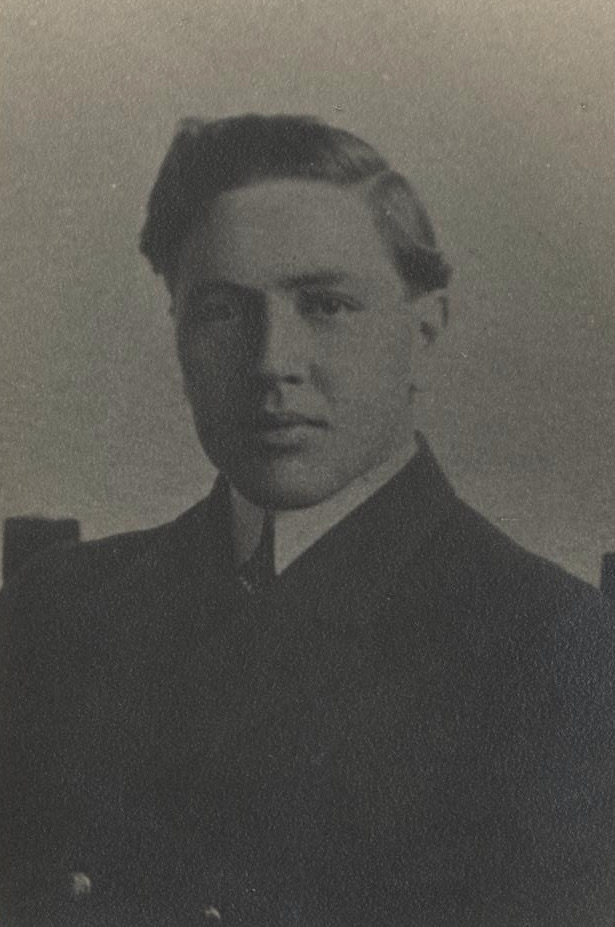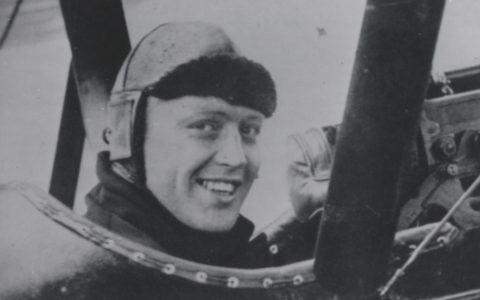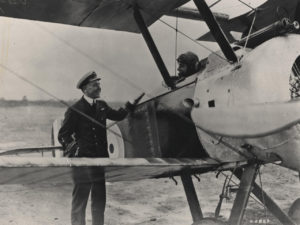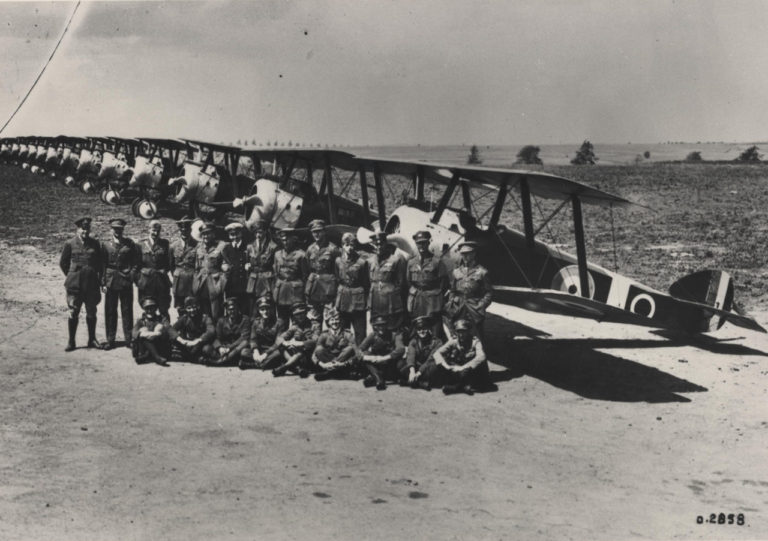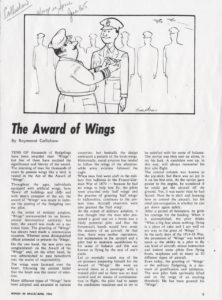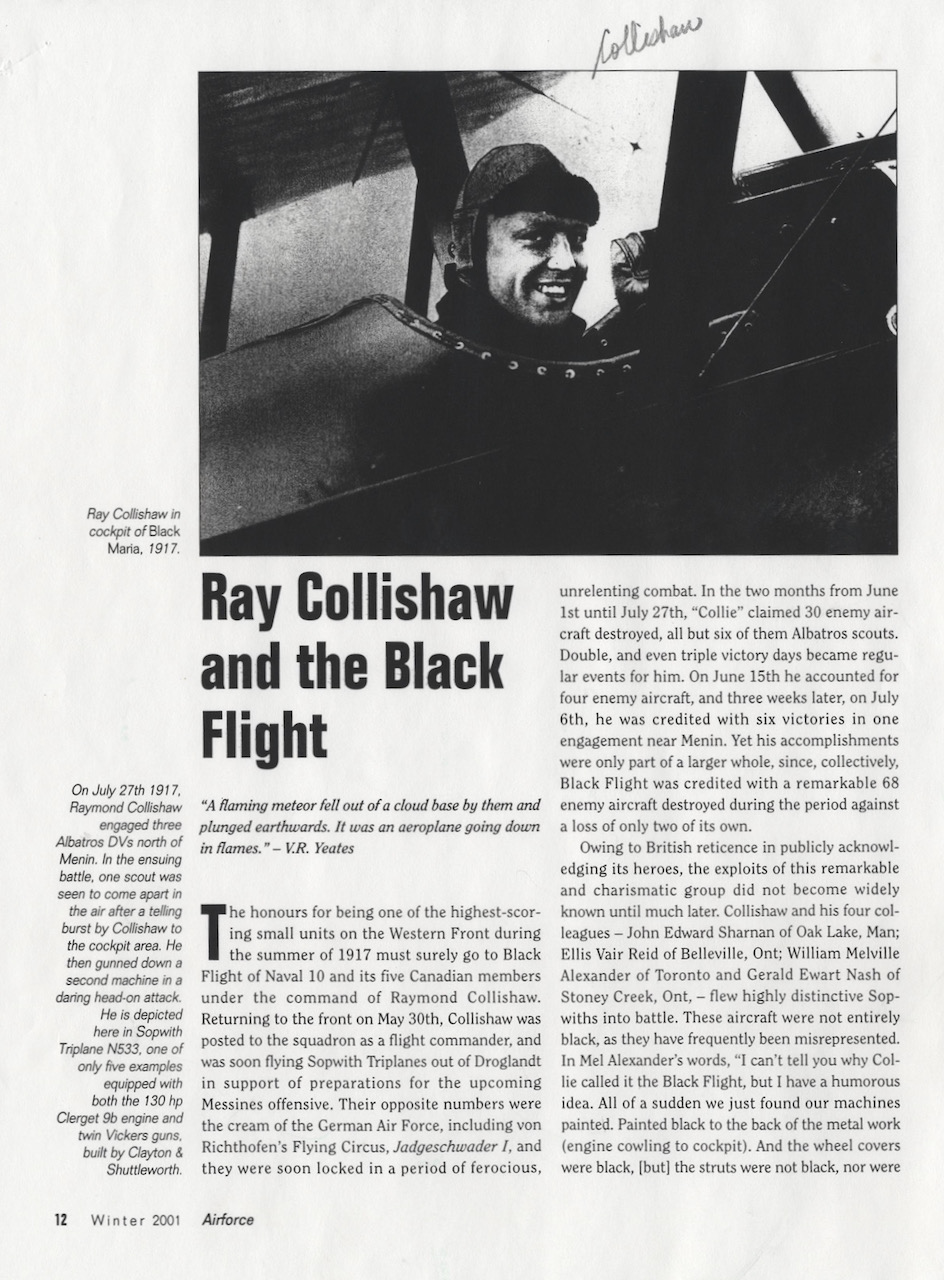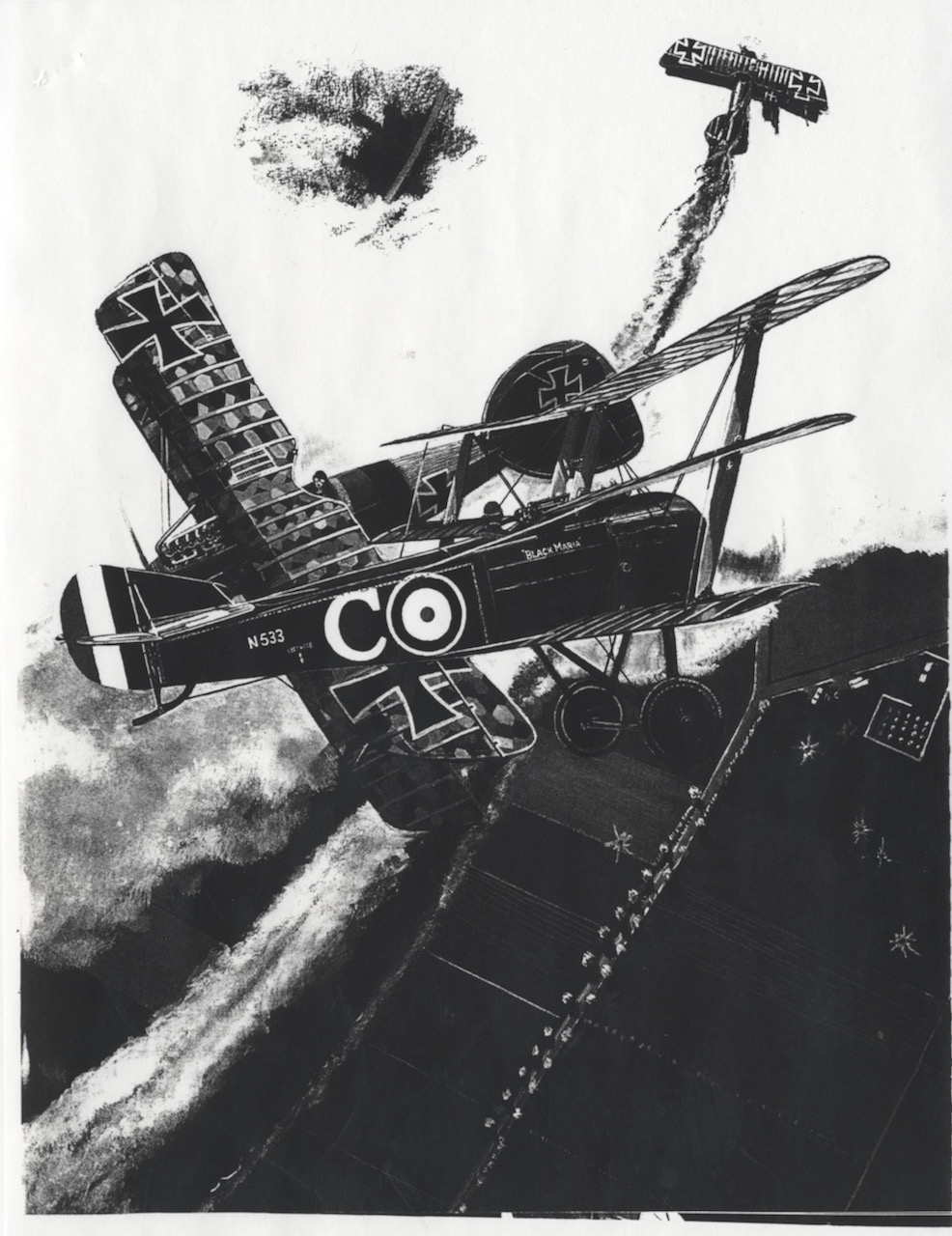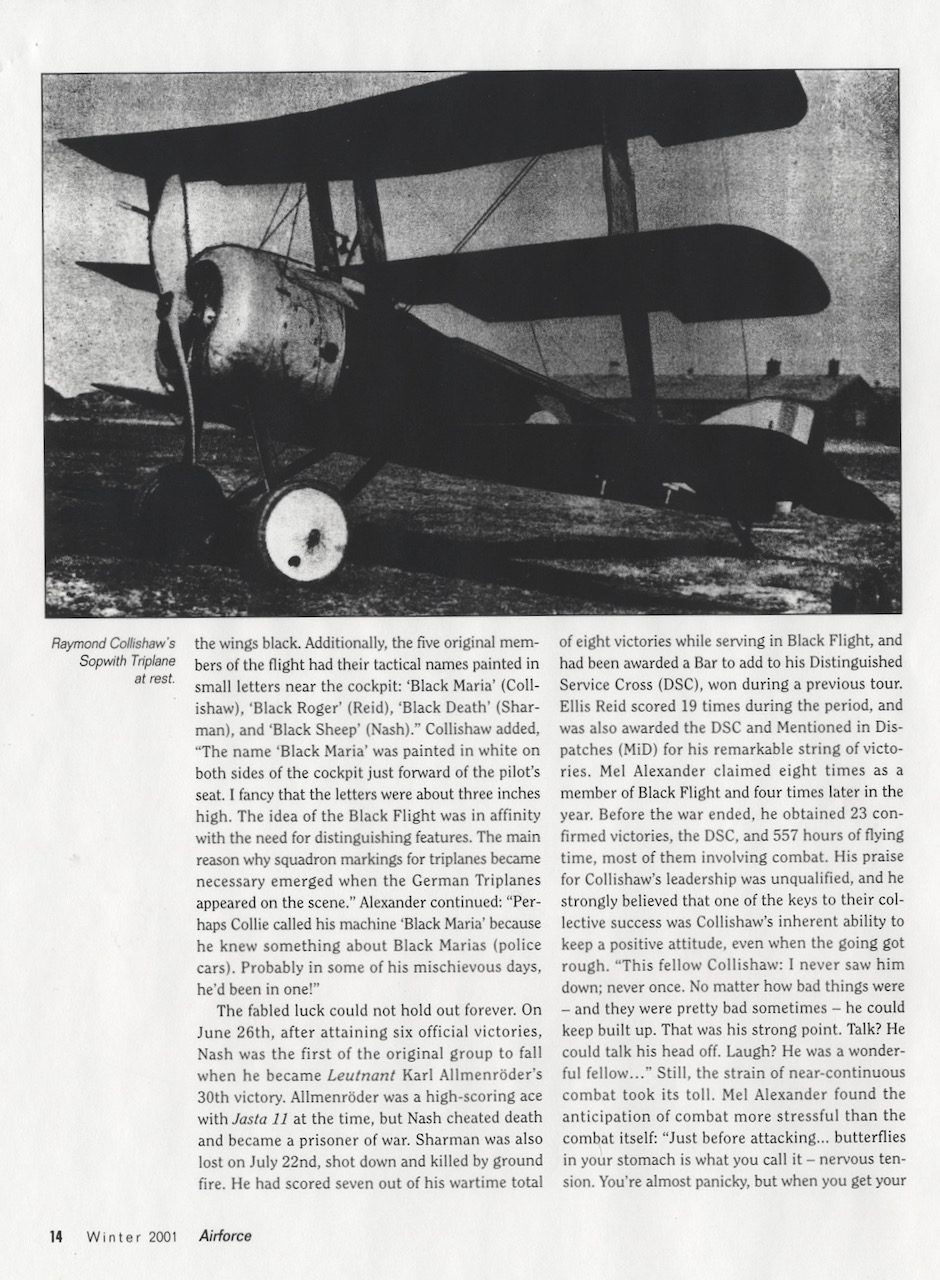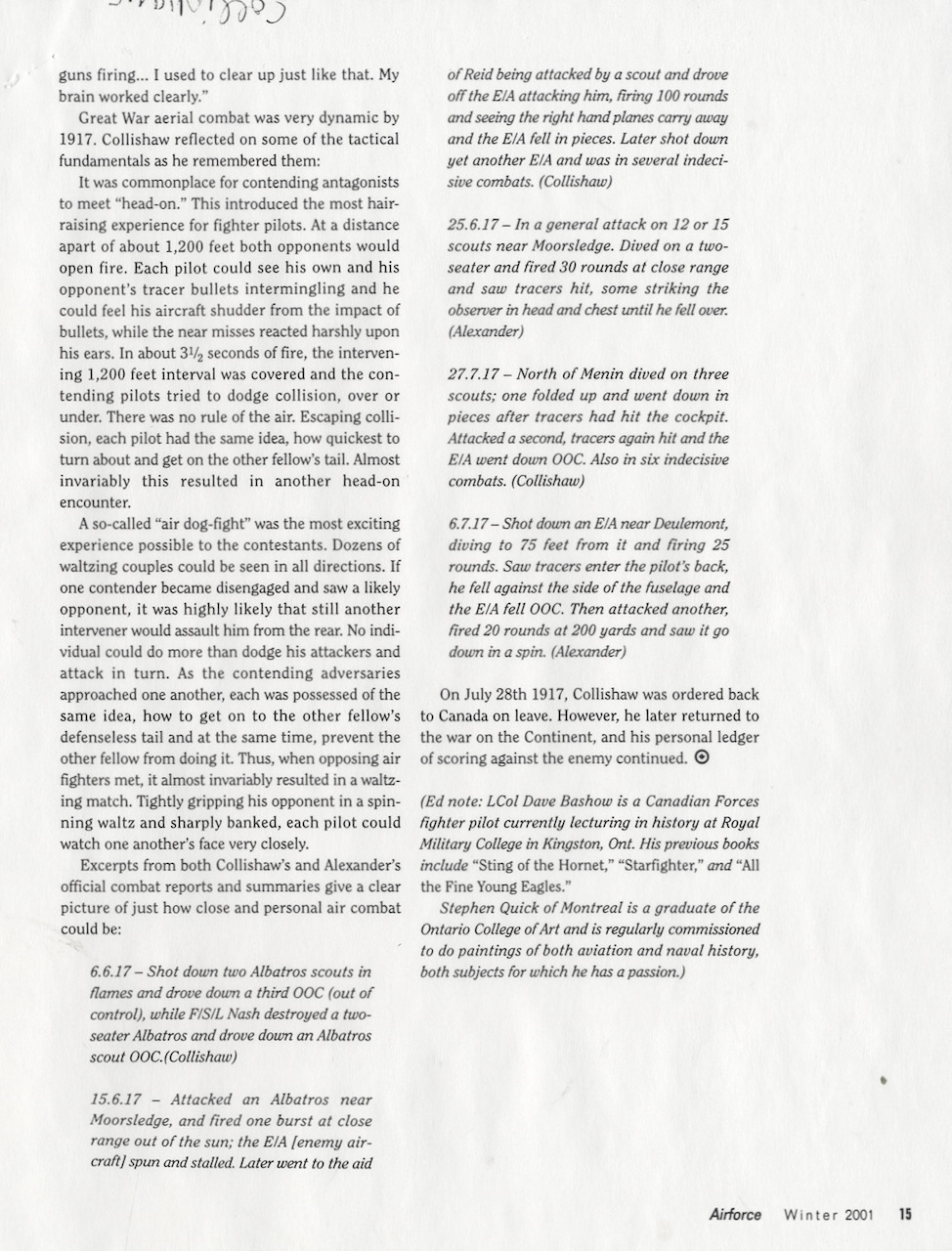Raymond Collishaw
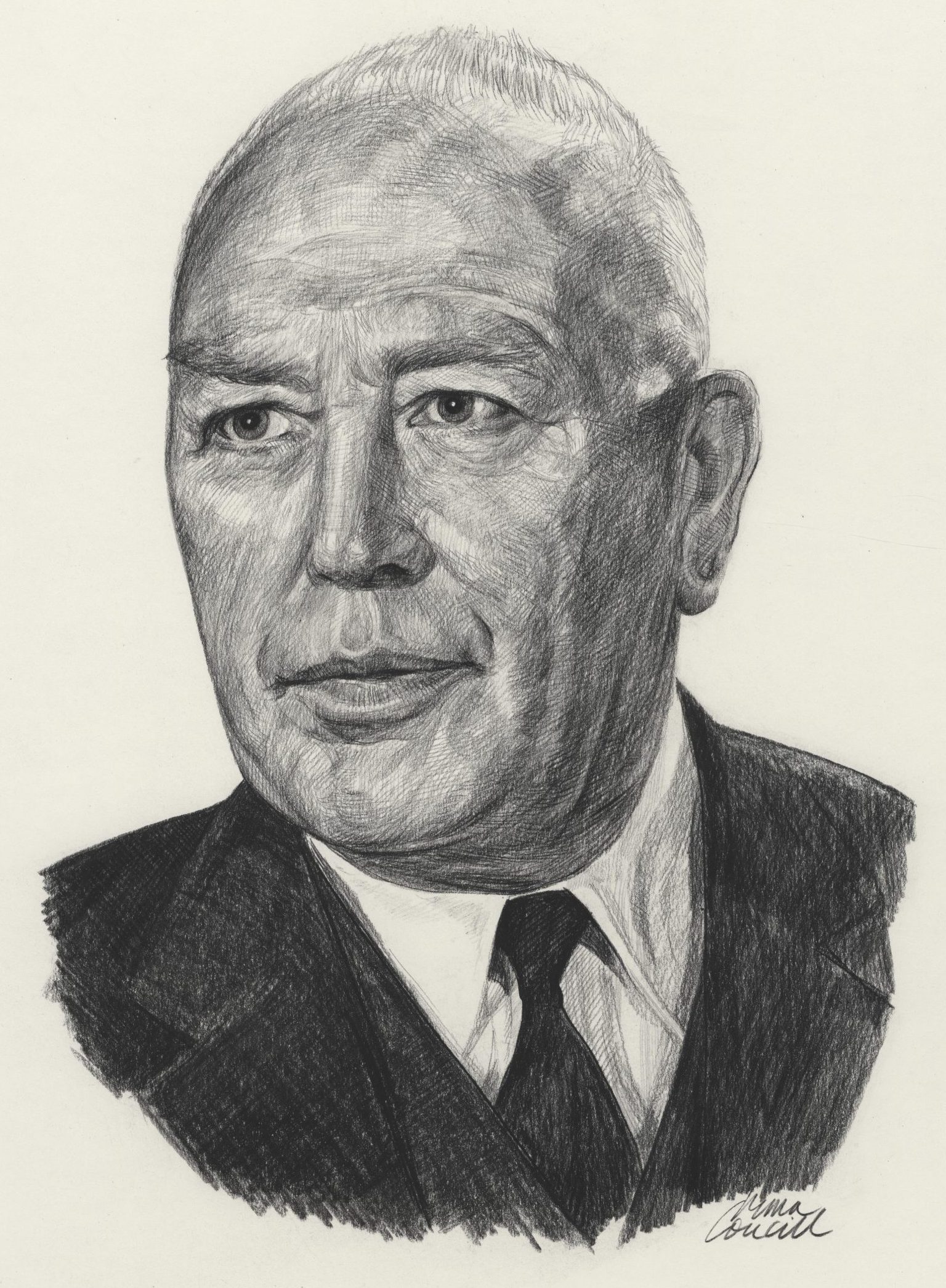
Nickname: Collie
Birth Date: November 22, 1893
Birthplace: Nanaimo, British Columbia
Death Date: September 28, 1976
Year Inducted: 1974
Awards: CB; DSO*; OBE*; DSC; DFC; The Order of St. Anne; The Order of St, Stanislaus and The Order of St. Valdimir (Russia)
No airman has served on more enemy fronts with greater distinction, and his indomitable spirit, despite adversity, gave such leadership to those under his command, as to have been of outstanding benefit to Canadian aviation
Flying in the First World War
Raymond (Collie) Collishaw C.B., D.S.O.*, O.B.E.*, D.S.C., D.F.C., was born in Nanaimo, British Columbia, on November 22, 1893, and received most of his schooling there. At age 15 he joined the Royal Canadian Navy's Fishery Protection Service. He served on several patrol ships operating along the British Columbia coast, and rose to First Officer. In 1915 he joined the Royal Naval Air Service (RNAS) and, at his own expense, briefly attended the Curtiss Flying School at Toronto, Ontario. In January of 1916 he embarked for England.
On completion of fighter training Collishaw was posted to No. 3 (Naval) Wing, formed to fly long range bombing attacks on German industrial targets from bases in France. After five months of escorting RNAS bombers to enemy targets he was awarded the French Croix de Guerre for gallantry in action. In 1917 he was posted to 3 (Naval) Squadron attached to the Royal Flying Corps (RFC) on the Somme. He scored his first confirmed aerial victories with this squadron but during the winter suffered severe frostbite and was sent to England to recover.
A Return To France
Collishaw returned to the Ypres front in France a month later and was posted to 10 (Naval) Squadron, a fighter unit, equipped with the Sopwith Triplane, and led the famous 'Black Flight' throughout the spring and summer of 1917. While serving with this squadron, he was credited with shooting down 27 German aircraft and was awarded both the Distinguished Service Cross (D.S.C.) and the Distinguished Service Order (D.S.O.). He was then granted leave to Canada.
He returned to duty in November 1917, as Flight Leader in the Seaplane Defence Squadron, based near Dunkirk, France. Its main duties were to provide the aerial protection of Royal Naval vessels off the French and Belgian coasts, carrying out fighter sweeps and escorting RNAS bombers. In December he took command of the squadron and during the next two months was able to add to his score of enemy machines destroyed.
Collishaw was made Commanding Officer of his old squadron, 3 (Naval). It eventually became 203 Squadron, RFC, and he was promoted to Major. When he led the squadron on patrols into enemy territory, his score of victories mounted steadily and more decorations followed: the Distinguished Flying Cross (D.F.C.) in July 1917, and a Bar to his D.S.O. in September 1918. The citation accompanying the latter award referred to his being credited with destroying 51 enemy machines as of August 1, 1918. Under his command, 203 Squadron was credited with shooting down some 125 enemy aircraft, with fewer than 30 of its own pilots being killed or taken prisoner of war. During his World War I flying career, he was Mentioned in Despatches on four occasions.
During a three month period, from May - July 1917, Major Ray Collishaw claimed 33 victories, and by war's end, Collishaw was the highest scoring pilot in the Royal Naval Air Service, with 60 victories, the third highest total of all British Empire pilots.
After The War
At war's end, he accepted a permanent commission in the RAF. During 1919 and early 1920's he commanded 47 Squadron which flew in south Russia in support of Denikin's White Russian Forces fighting the Bolsheviks. In late 1920 Collishaw was sent to Iraq to command 30 Squadron in further actions against the Bolsheviks in north Persia. Collishaw was named an Officer of the Order of the British Empire (O.B.E., Military) and three Imperial Russian orders were added to his list of decorations: The Order of St. Anne, the Order of St. Stanislaus and The Order of St. Valdimir.
Three years later he returned to England and attended the RAF Staff College. More commands of squadrons and stations followed. In 1929, as Wing Commander, he was appointed senior RAF Officer aboard HMS Courageous, an aircraft carrier in the Mediterranean Sea. In 1932 he returned to England to take command of the RAF station at Bircham Newton. In 1935, as Group Captain, he took command of the RAF station at Upper Hayford.
The Second World War
As war with Germany became increasingly imminent, the RAF forces in the Middle East were strengthened. In 1939 a new operational formation known as the Egypt Group came into being. Collishaw was promoted to Air Commodore in 1940 commanding this group which ultimately became known as the Desert Air Force.
When Italy entered the war in 1940, Collishaw's group was badly outnumbered. He was able to maintain the offensive, and his crews destroyed some 1,100 Italian aircraft. He managed to fly operations in Hurricanes before being grounded. He was considered too valuable to lose and knew too much to be captured by the enemy. His inspirational leadership was recognized in March 1941, when he was created a Companion of the Order of the Bath (C.B.).
In 1942 Collishaw was posted to Fighter Command Headquarters in England. He was promoted to Air Vice-Marshal and given command of 14 Fighter Group in Scotland. He retired from the RAF in 1943, but until war's end served as liaison officer with the Civil Defence Organization.
Collishaw returned to Canada in 1945. In 1946 he was created an Officer of the Order of the British Empire (O.B.E., Civil). He died in Vancouver, September 29, 1976.
Raymond (Collie) Collishaw was inducted as a Member of Canada's Aviation Hall of Fame in 1974 at a ceremony held in Edmonton, Alberta.
News Stories
To return to the Inductee Page, please click here.

